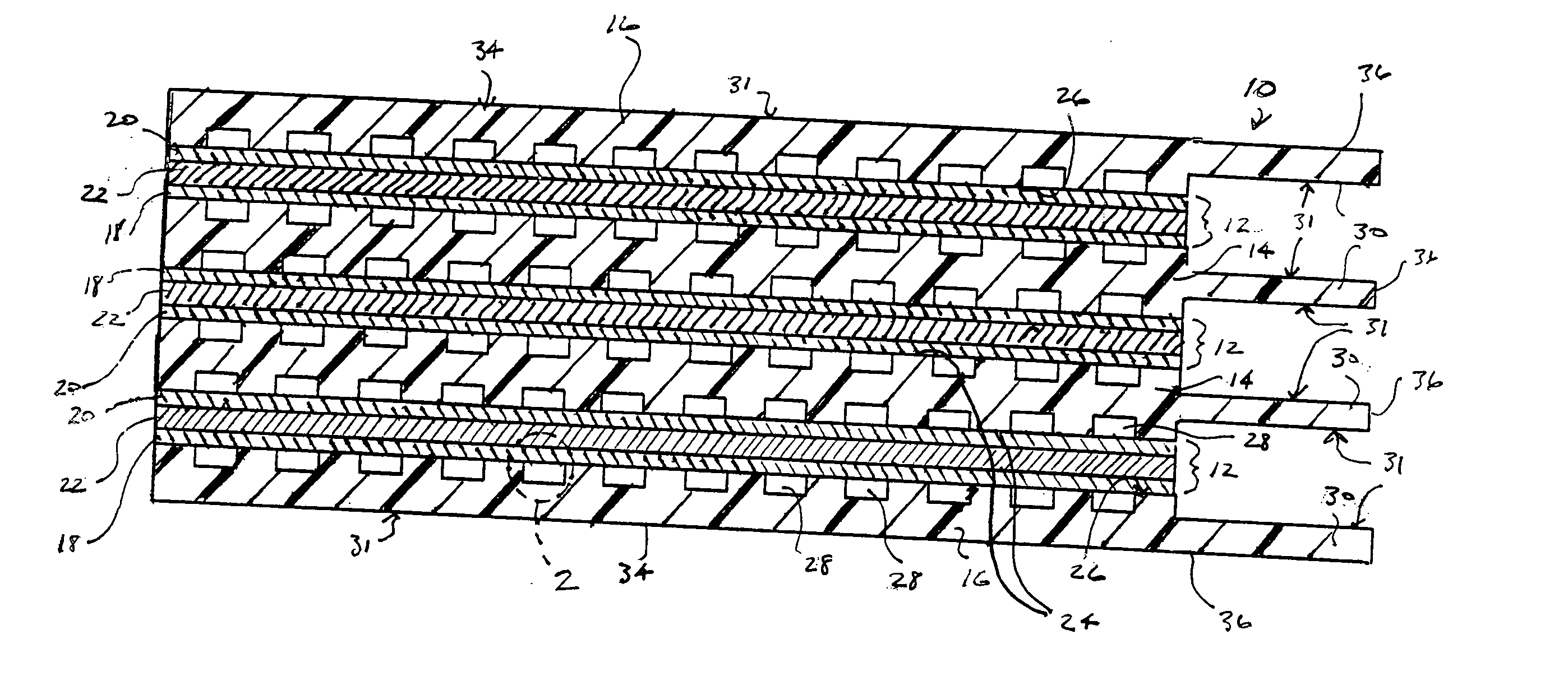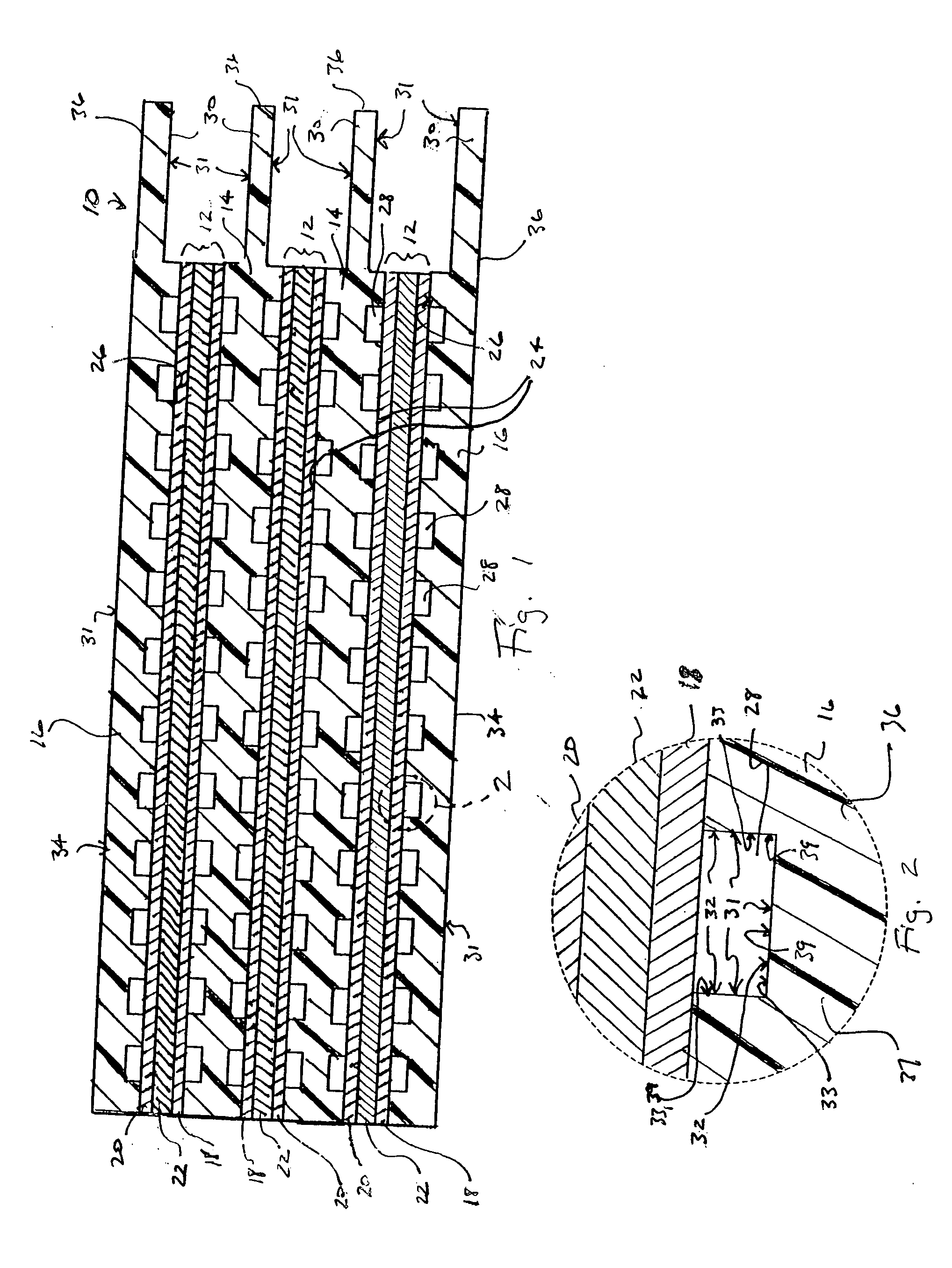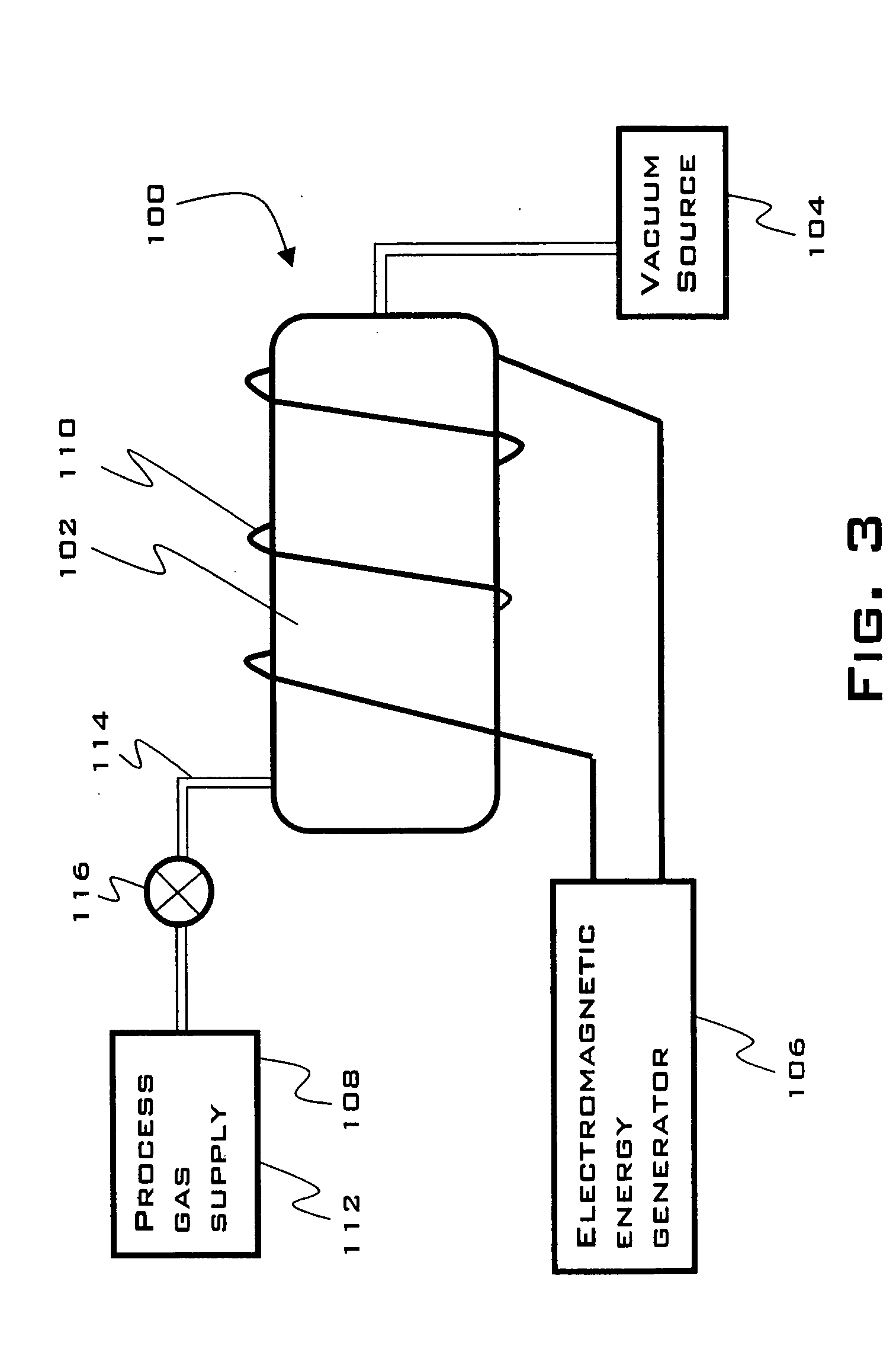Lyophilic fuel cell component
a fuel cell and lyophilic technology, applied in the field of fuel cells, can solve the problems of restricting or blocking the flow of fuel into the cell, limiting the use of materials with such a high temperature process, and affecting so as to improve the lyophilicity of the exposed surface, facilitate mass production, and improve the effect of wettability
- Summary
- Abstract
- Description
- Claims
- Application Information
AI Technical Summary
Benefits of technology
Problems solved by technology
Method used
Image
Examples
Embodiment Construction
For the purposes of this application, the term “fuel cell” means any electrochemical fuel cell device or apparatus of any type, including but not limited to proton exchange membrane fuel cells (PEMFC), alkaline fuel cells (AFC), phosphoric acid fuel cells (PAFC), molten carbonate fuel cells (MCFC), and solid oxide fuel cells (SOFC). The term “fuel cell stack apparatus” refers to an apparatus including at least one fuel cell and any and all components thereof, along with any and all of the separate components related to the functioning of the fuel cell, including but not limited to, enclosures, insulation, manifolds, piping, and electrical components.
A portion of an embodiment of a fuel cell stack apparatus 10 according to the present invention is depicted in simplified cross section in FIG. 1. Fuel cell stack apparatus 10 generally includes membrane electrode assemblies 12, which are separated by bipolar plates 14. Single sided bipolar plates in the form of end plates 16 contain ...
PUM
| Property | Measurement | Unit |
|---|---|---|
| electrical potential | aaaaa | aaaaa |
| pressure | aaaaa | aaaaa |
| electromagnetic energy | aaaaa | aaaaa |
Abstract
Description
Claims
Application Information
 Login to View More
Login to View More - R&D
- Intellectual Property
- Life Sciences
- Materials
- Tech Scout
- Unparalleled Data Quality
- Higher Quality Content
- 60% Fewer Hallucinations
Browse by: Latest US Patents, China's latest patents, Technical Efficacy Thesaurus, Application Domain, Technology Topic, Popular Technical Reports.
© 2025 PatSnap. All rights reserved.Legal|Privacy policy|Modern Slavery Act Transparency Statement|Sitemap|About US| Contact US: help@patsnap.com



